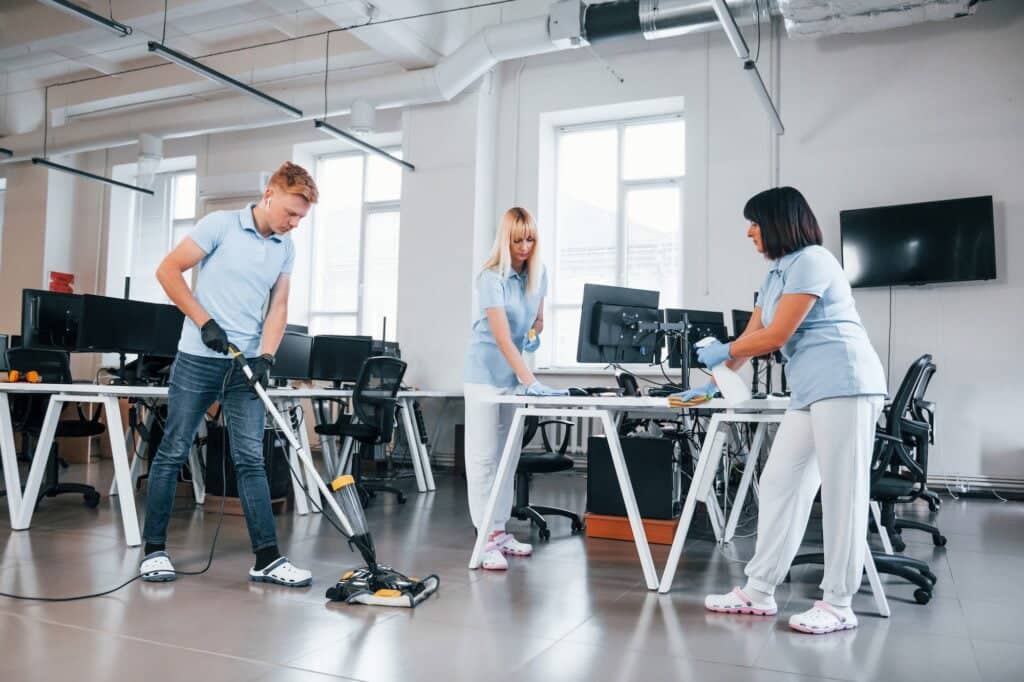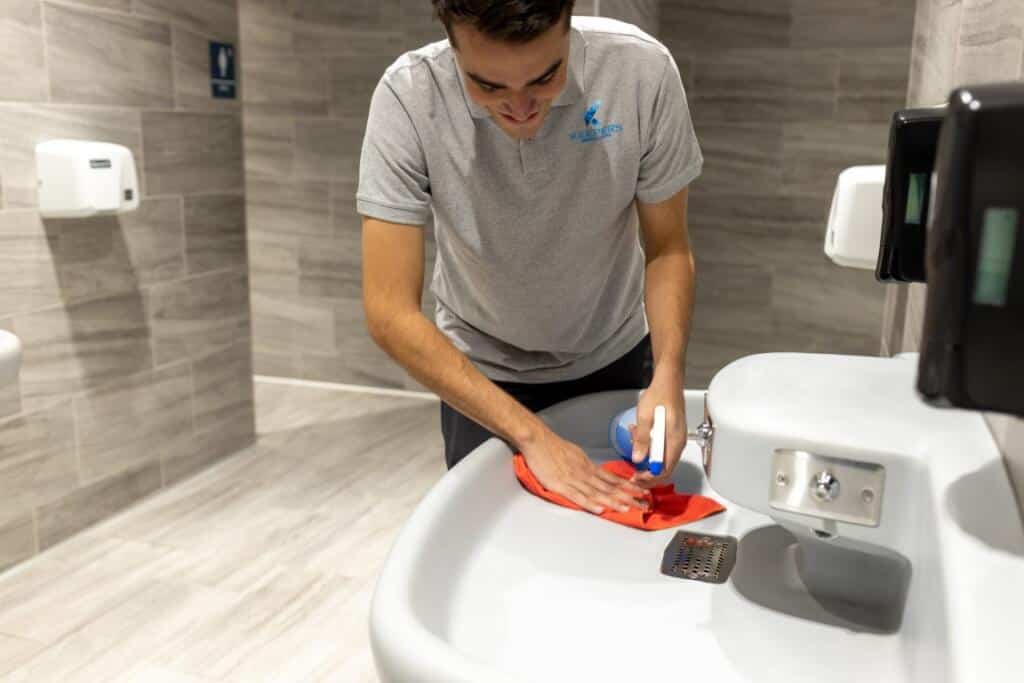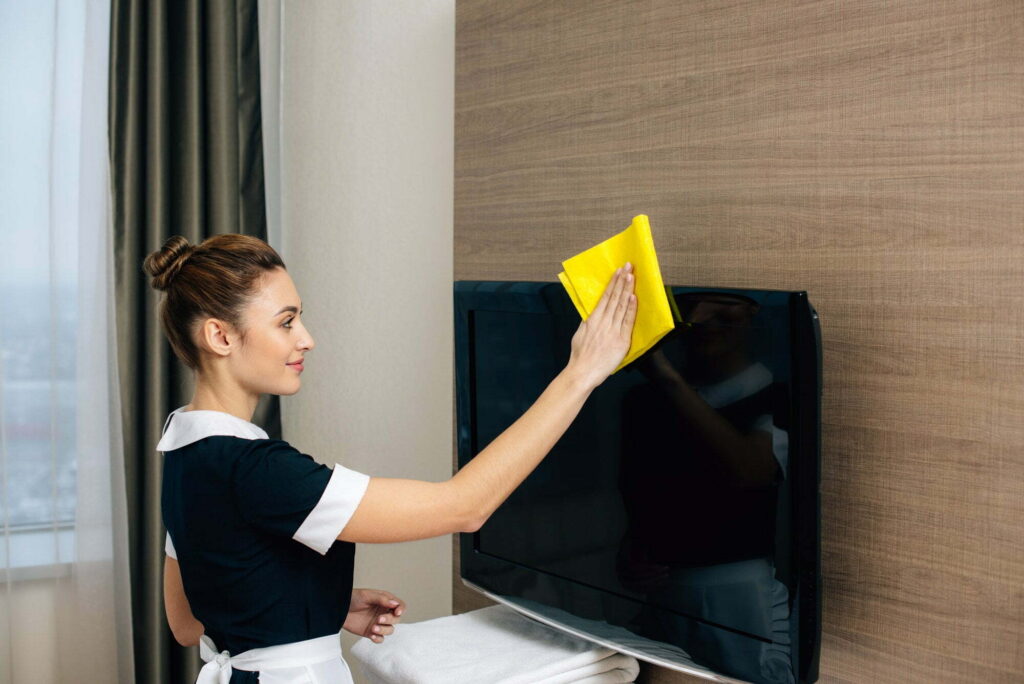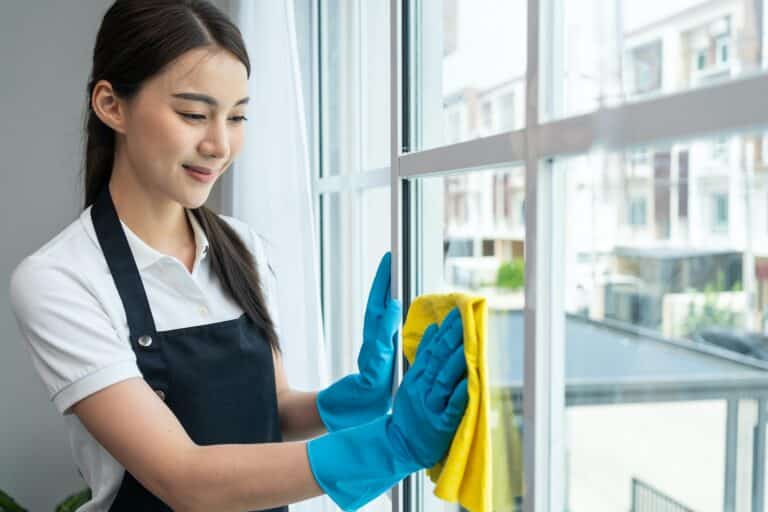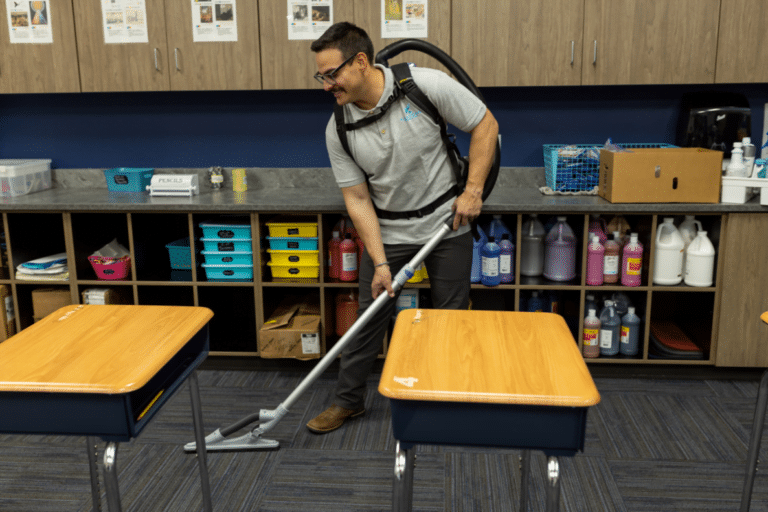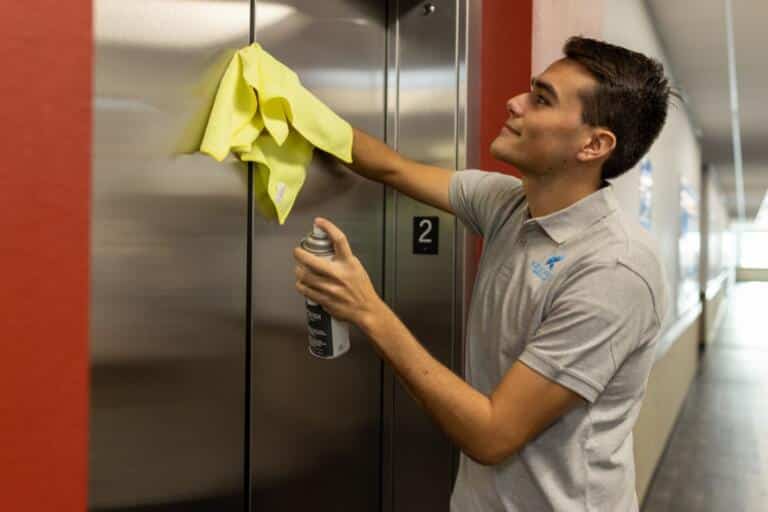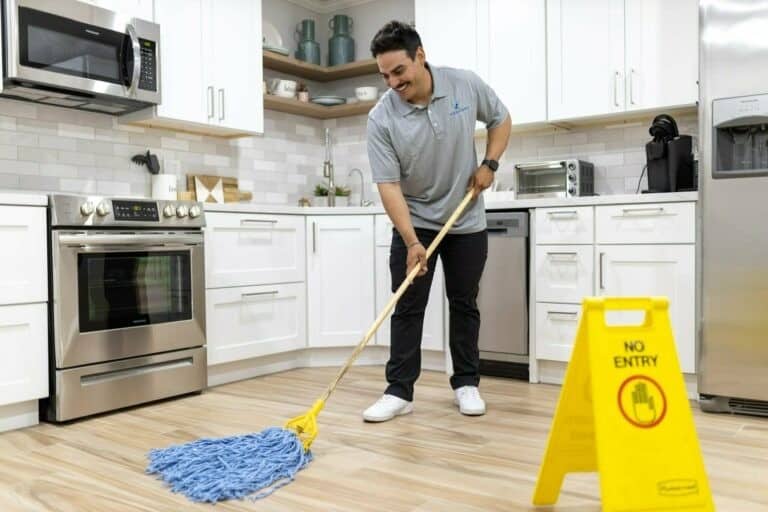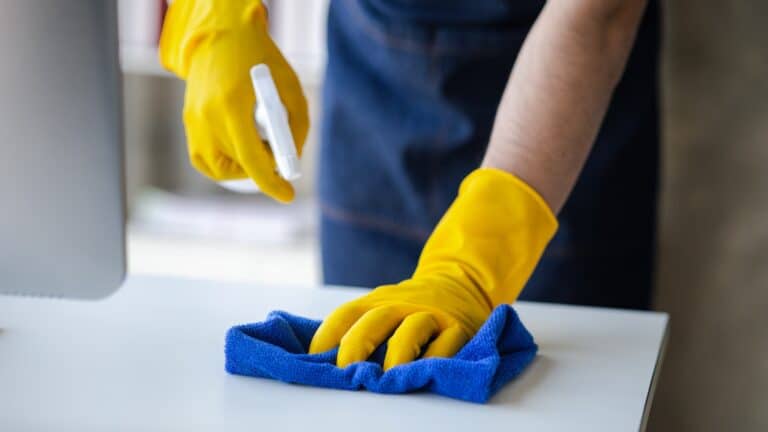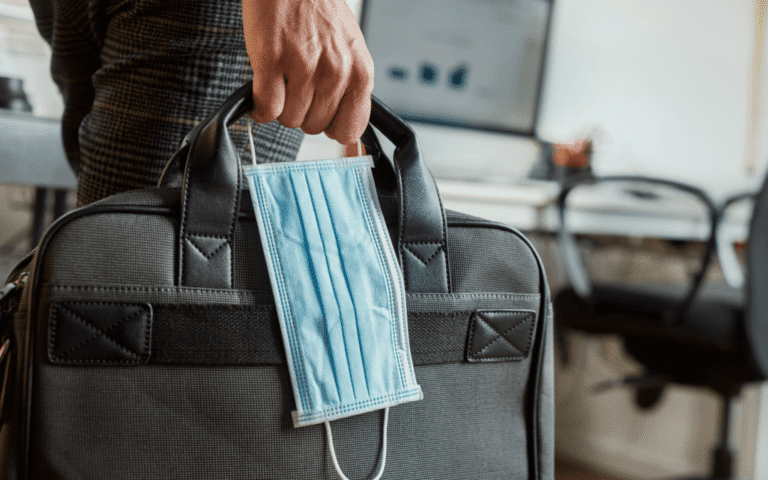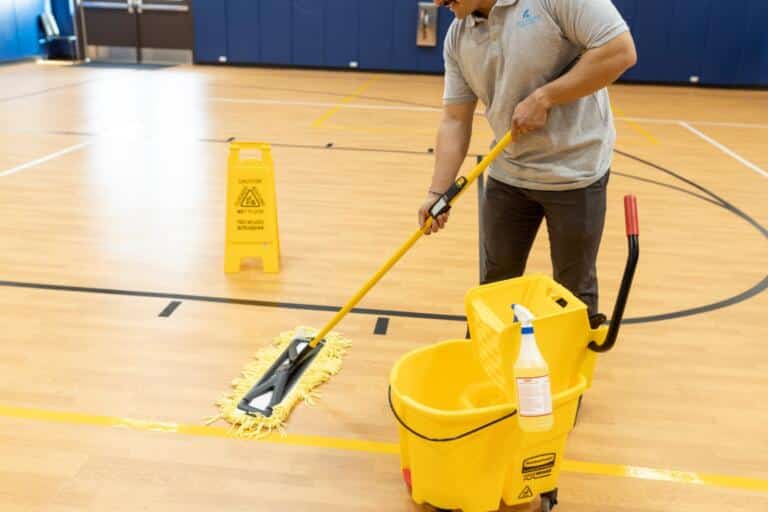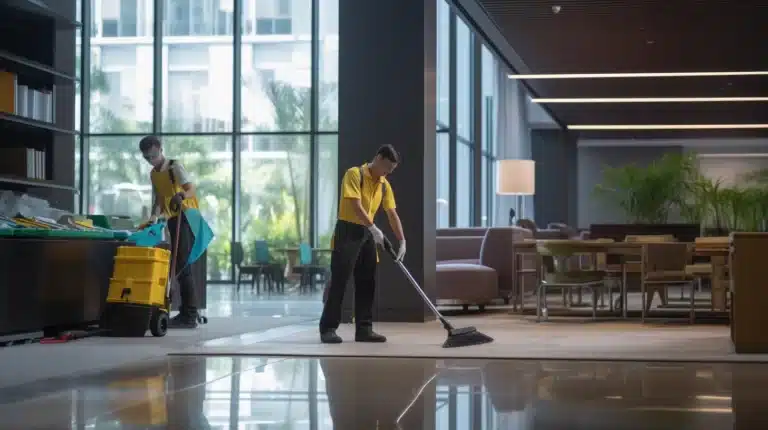Maintaining the dirtiest places in your office is crucial for the comfort and satisfaction of employees and their health. A dirty workplace can cause illnesses, absenteeism, and reduced productivity.
Employers need to promote cleanliness in the workplace by educating employees on preventing the spread of germs. In this article, we will explore the top 10 germiest places in your workplace.
By identifying these areas, you can minimize exposure to germs and reduce the risk of getting sick. We will provide tips and suggestions on how to keep these areas clean so that you can maintain a healthy work environment.
The Importance of Workplace Cleanliness and Hygiene
A clean workplace creates a more pleasant environment for employees and helps prevent the spread of illness-causing germs. When people come into contact with contaminated surfaces or objects, they unknowingly transfer harmful bacteria or viruses onto their hands, which can spread through touch or by coughing and sneezing.
Germs such as E.coli, norovirus, influenza virus, staphylococcus aureus (MRSA), and salmonella thrive in warm environments like offices that many people share. They can quickly spread from person to person when someone touches a contaminated surface or object.
The consequences of an unclean workplace include reduced productivity due to employee illness or absenteeism. Employers must promote good hygiene practices among workers by giving them easy access to hand sanitizer stations throughout the office.
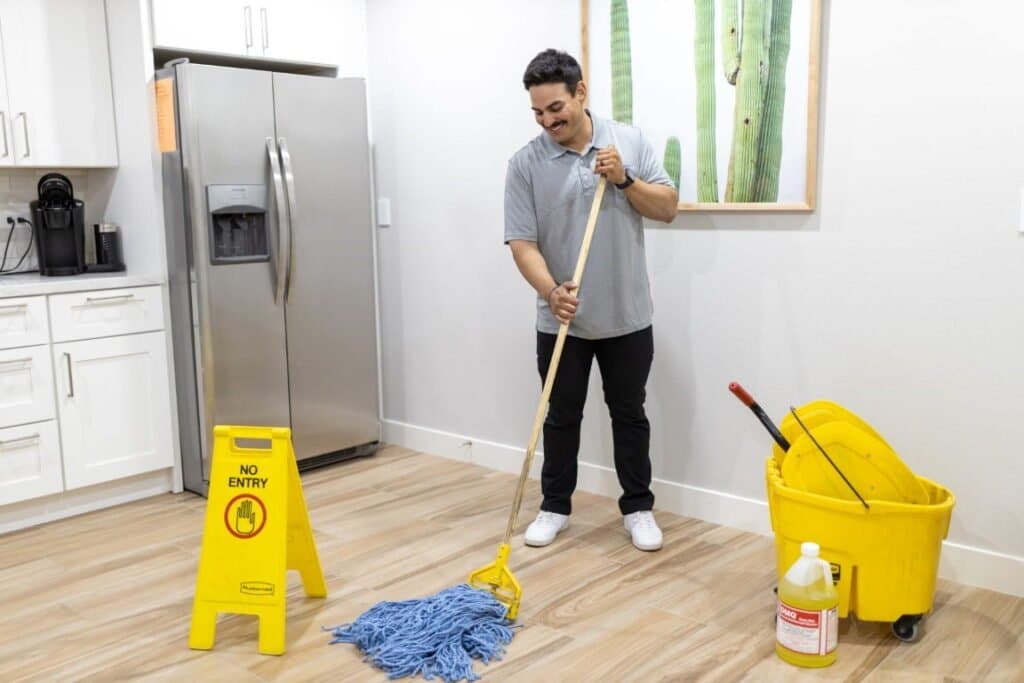
Overview of The Top 10 Germiest Places in Your Workplace
Now let’s look at some familiar places where harmful bacteria may lurk in your office space: 1. Restroom – The toilet seat, sink handles, and door knobs are joint surfaces where germs accumulate.
2. Break room – Shared equipment like refrigerator handles, coffee pot buttons, and countertops can harbour germs. 3. Desk area – Keyboards, phones, and other frequently used items can be breeding grounds for bacteria.
4. Elevator buttons – These are touched by hundreds of people daily and are a prime spot for germ accumulation. 5. Water fountains – Bacteria from people’s mouths or hands can contaminate water fountains
6. Meeting rooms – Multiple people touching shared objects like pens or conference room tables can spread germs 7. Reception area – Visitors who enter the workplace may introduce new germs to the office space through contact with surfaces such as chairs and door handles.
8. Printer/Copier area – Buttons on printers/copiers are often overlooked during cleanliness procedures 9. Stairway handrails – Handrails accumulate dirt and germs that are often overlooked.
10. Kitchen sink – The kitchen sink is a source of germ accumulation due to food particles left behind. By understanding where germs hide in your workplace, you can focus on keeping these areas clean to promote a healthy work environment for all employees.
Restroom
The Germiest Surfaces in the Restroom
The restroom is one of the germiest areas in any workplace. Many surfaces in this area are often touched by multiple people throughout the day, making it a prime spot for germ accumulation.
These surfaces include toilet seats, sink handles, and door knobs. Toilet seats are often contaminated with fecal bacteria, which can quickly spread to other areas through contact with hands or clothing.
Sink handles harbour germs from people’s hands that have touched other surfaces like door handles or railings before washing their hands. Door knobs also accumulate germs from people’s hands and can be difficult to avoid touching.
Tips for Staying Clean in the Restroom
Despite the high level of germ accumulation in restrooms, there are several steps you can take to stay clean and avoid illness. Firstly, always wash your hands thoroughly after using the restroom and use a paper towel or tissue to turn off taps and open doors if possible.
Secondly, use disinfectant wipes or spray provided by your employer to clean any surfaces you come into contact with before using them. This includes toilet seats, sink handles, door knobs, and even soap dispensers.
Consider using a barrier method when using public restrooms, such as covering the toilet seat with toilet paper or using disposable seat covers often provided in some facilities. By taking these steps consistently, you will minimize your exposure to harmful bacteria and viruses that can cause illness while visiting the restroom at work.
Break Room: Overlooked Germ Hotspots
The break room is a popular area in the workplace where employees go to relax, take a break, eat their lunch, or have a coffee. However, it’s also one of the germiest places in the office.
Many people overlook cleaning everyday items in the break room that are frequently used but rarely disinfected. One of the most common areas overlooked is refrigerator handles.
A refrigerator is where employees store their food and drinks throughout the day. However, few people consider cleaning their hands before opening or closing the refrigerator door.
Thus, bacteria and germs can accumulate on refrigerator handles and spread quickly. Another item that is often not cleaned in the break room is the coffee pot buttons.
Multiple people use coffee pots throughout the day, which can be a breeding ground for germs if not properly maintained. The buttons on these machines can harbour bacteria if they’re not adequately wiped down after each use.
Maintaining a Clean Break Room Environment
To reduce contamination and maintain cleanliness in your work environment’s break room, it’s crucial to establish guidelines for proper hygiene practices: – Assign someone to clean regularly – Whether it’s an employee or part of the cleaning staff, someone should be responsible for regularly cleaning and disinfecting all surfaces in the break room.
– Encourage hand washing – Place reminders around sinks to encourage everyone to wash their hands before entering or leaving the break room. – Avoid sharing cups or utensils – Even if you think you’re healthy, sharing cups or utensils can spread germs from person to person.
– Encourage employees to bring their food – Bringing your lunch from home instead of eating out daily reduces exposure to potential contamination. These steps towards maintaining a clean environment in your workplace’s break room will reduce your chances of getting sick while at work and keep everyone healthy.
Desk Area: Germ Breeding Grounds
The average desk is home to more than 10 million bacteria, making it one of the germiest places in your workplace. With frequent use and shared equipment like keyboards and phones, desks can quickly become breeding grounds for germs.
Germs can live on surfaces for hours or even days, making it easy to spread from person to person. Keeping your desk area clean is essential to keep yourself healthy and avoid getting sick.
The Keyboard: A Hotspot for Germs
One of your desk’s most germ-ridden pieces of equipment is likely your keyboard. Think about how often you touch this item throughout the day without washing your hands! Research shows that keyboards can carry up to 20,000 times more bacteria than a toilet seat!
To keep your keyboard germ-free, consider cleaning it with disinfectant wipes daily. You should also avoid eating at your desk since this will only provide additional opportunities for spreading germs.
Cleanliness is Key
Another way to minimize the amount of germs on your desk is by keeping it clean! Try wiping down all surface areas with disinfectant wipes at least once daily.
Don’t forget about other shared items like phones and office supplies such as staplers or tape dispensers, which could also be breeding grounds for germs! Additionally, if you’re feeling under the weather, sanitize all surfaces you have touched frequently throughout the day when you return to work.
Minimizing Shared Equipment Use
Shared equipment like pens and markers may be necessary for some jobs but consider minimizing their use if possible due to their risk of being contaminated with germs from another user. Encourage coworkers to bring their writing utensils whenever possible or assign designated “personal” pens for each employee.
This way, employees can avoid spreading germs through shared equipment and help reduce the risk of getting themselves or others sick. Keeping your desk area clean is essential to maintaining good health in the workplace.
By following these tips and being mindful of the risks that shared equipment and frequent use present, you can minimize your chances of getting sick from germs in the workplace. Remember, a clean workspace is a healthy workspace!
Elevator Buttons: A Breeding Ground for Germs
Elevator buttons are one of the most frequently touched surfaces in any workplace, making them a prime spot for germ accumulation. Every time someone enters or exits the building, they come into contact with the elevator buttons. This means that germs can easily be spread from person to person through contact with these buttons.
Studies have shown that elevator buttons harbour germs more than a public toilet seat. Elevator buttons are particularly susceptible to germ accumulation because they’re made of hard plastic or metal surfaces.
These materials provide an ideal breeding ground for many bacteria and viruses. Additionally, because elevator buttons are located in enclosed spaces such as elevators or stairwells, there’s often little air circulation, increasing the risk of germ transmission.
How to Avoid Germs on Elevator Buttons
Fortunately, there are several things you can do to avoid germs on elevator buttons. A straightforward solution is to use an object other than your finger to press the button, such as your elbow or a pen cap.
If you need to use your hand, try using your knuckle instead of your fingertip since it’s less likely to come into contact with other people’s skin. Another way to prevent germ transmission is using hand sanitizer after touching the button.
Keep a small bottle of hand sanitizer in your pocket or bag to quickly sanitize your hands after pressing the button. Building managers can take steps to reduce the spread of germs on elevator buttons by installing touchless technology such as infrared sensors or motion detectors that eliminate the need for physical contact.
While it may seem small, avoiding germs on elevator buttons is essential in maintaining workplace cleanliness and hygiene. By taking these simple precautions, we can all do our part in reducing the spread of germs in the workplace.
Water Fountains:
The Bacteria-Ridden Water Fountains in Your Office
Water fountains are often overlooked when it comes to cleaning and can be a prime spot for bacteria growth. The main reason is that people often touch the buttons or faucet handles with their hands, which may have come into contact with germs from other surfaces.
Water fountains are also prime spots for bacterial growth because the moist environment serves as an ideal breeding ground for bacteria. Water fountains not adequately cleaned and maintained regularly can accumulate harmful pathogens such as E.coli and Legionella.
These germs can cause serious illnesses such as pneumonia, urinary tract infections, and gastrointestinal issues. In addition to these factors, there is always the risk of someone accidentally breathing in contaminated water droplets while drinking from a fountain.
Minimizing Germ Exposure at Water Fountains
There are several ways to minimize germ exposure at water fountains in your workplace. One effective way is by bringing your usable water bottle instead of drinking directly from the fountain. This reduces direct contact with the faucet handle or buttons on the fountain.
Another way to minimize germ exposure is by using disinfectant wipes or sprays on the faucet handles before using them. This helps kill any germs that may be present on the surface of these handles.
It is also essential for employers to schedule regular cleaning and maintenance of all water fountains in their workplace. This includes disinfecting all surfaces, including faucets, buttons, and basins, every day or multiple times per day if necessary.
While it may seem minor, maintaining clean water fountains in your workplace is crucial for preventing illness and promoting overall health among employees. These tips for minimizing germ exposure at water fountains can help ensure a cleaner and healthier workplace environment.
Meeting Rooms
The Importance of a Clean Meeting Room
Meeting rooms are another space in the workplace that can harbour germs quickly due to frequent use and multiple people touching the same surfaces. Conference tables, chairs, and AV equipment are all high-touch areas that can become breeding grounds for bacteria if left unchecked. In addition, if employees eat or drink in the meeting room, spills and crumbs can also contribute to germ accumulation.
Precautions You Can Take
To keep your meeting room as clean as possible, it’s essential to wipe down all surfaces with disinfectant wipes after each use. This includes the conference table, chairs, and other equipment used during the meeting. If food or drinks are allowed in the meeting room, be sure to have plenty of paper towels and cleaning supplies available for quick clean-up of any spills or messes.
Another way to minimize germ exposure is by limiting the number of people physically attending meetings by opting for virtual meetings. With so many video conferencing tools available today, like Zoom and Skype, meeting without needing everybody in person is more accessible.
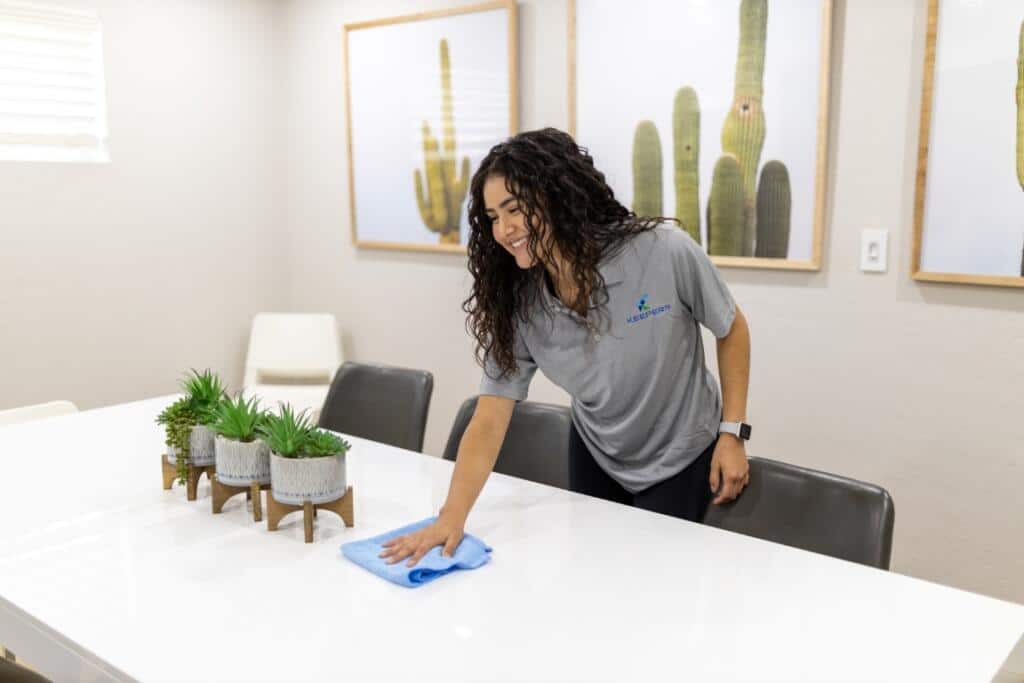
Request a Commercial Cleaning Quote Today
Please don’t settle for less when maintaining a clean, healthy, and productive work environment. Experience Arizona’s top-rated commercial cleaning service in Catalina, Arizona, that sets itself apart with its proactive, reliable, and responsive approach.
Keepers Commercial Cleaning is committed to meeting your expectations and exceeding them. With our regular inspections, we ensure any imperfections are corrected before you even notice them. And our guarantee to you? Complete satisfaction or your money back.
Join the growing number of building managers in Phoenix and Arizona who’ve chosen to elevate their cleaning standards. Request your quote today and discover the Keepers’ differences!
Conclusion
When it comes to maintaining a healthy workplace environment, cleanliness is essential! By identifying the top 10 germiest places in your workplace and taking preventative measures such as regular cleaning and personal hygiene practices like washing hands frequently, you can create a healthier work environment for you and your colleagues. While it may seem overwhelming at first glance with so many high-touch areas throughout a typical office building, simply setting up procedures will help everyone develop habits that lead to maintaining a cleaner workspace, ultimately helping everyone stay healthier over time!
SOURCES:
https://www.vanguardcleaning.com/blog/top-10-dirty-areas-in-an-office/
https://www.tasteforhygiene.com/blog/post/the-top-10-dirtiest-places-in-your-office
https://www.webmd.com/cold-and-flu/ss/slideshow-germs-office




